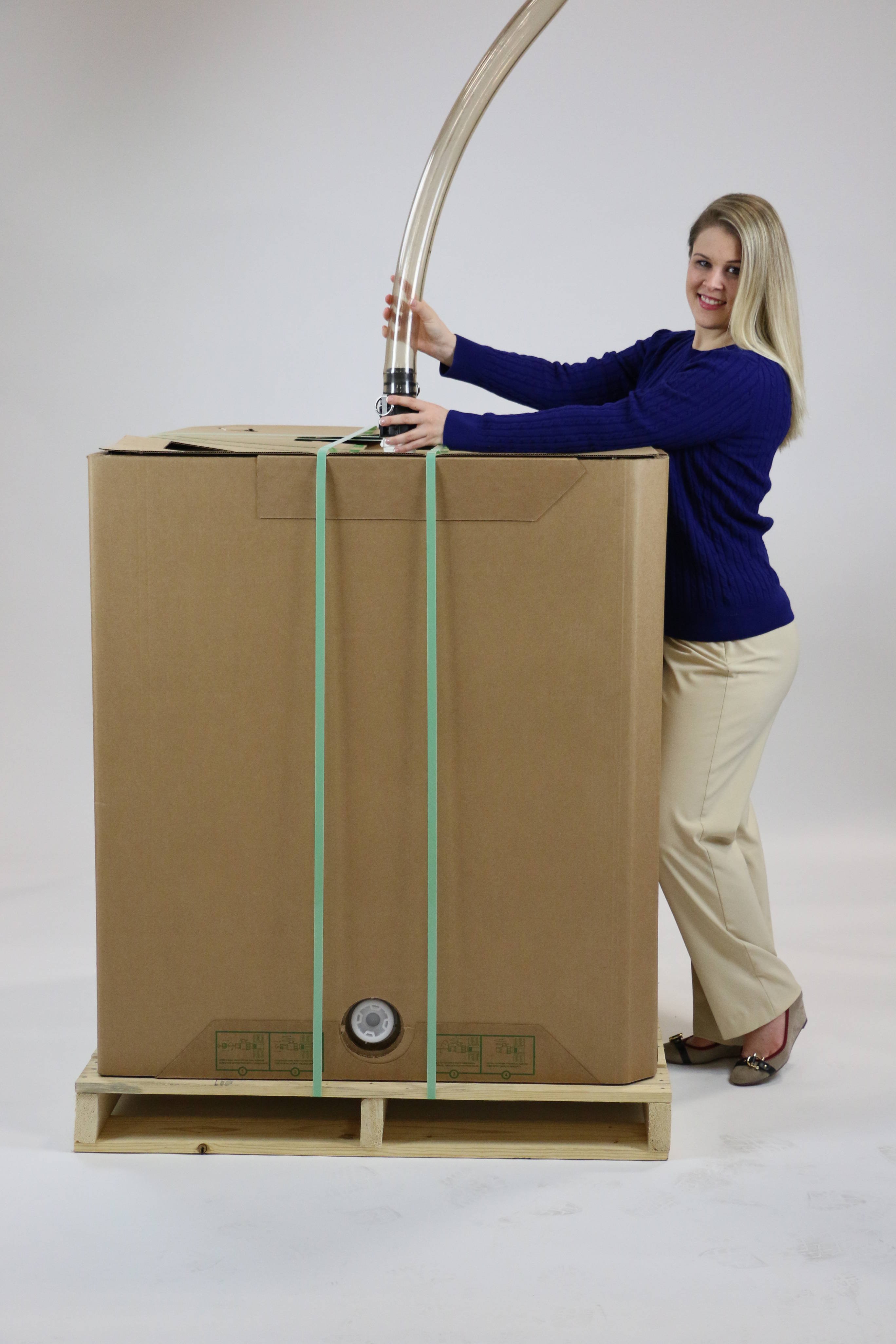How to stop contamination in my stainless steel containers?
Stainless steel containers must be cleaned before reuse. Contamination is a major concern for all food producers. If a stainless steel tank becomes contaminated, the liquid product must be either reworked or destroyed. This leads to added expenses and downtime within your plant. Disposable liquid bulk containers could be a solution to eliminate contamination and increase productivity.
All companies today want the ability to track raw materials to the finished product. This means every package needs its own lot and batch code for tracking purposes. Liquid bulk totes allow that level of tracking to take place fast. By using disposable bulk containers, you make tracking simple and eliminate waste. Liquid bulk products from one batch never mix with another in the EZ-SET totes. The ability to package separately ensures 100% tracking of raw material to finished product.
Here is a typical process in cleaning out a stainless steel tank.
Never CIP the tank below ambient temperature – hitting a cold tank with hot CIP can cause the tank to crack, resulting in a leak
Remove all other foreign metals before CIP. This includes iron, brass, nickel alloy, copper, aluminum, etc.
Using chlorine or iodine in liquid form, a moist vapor, or in gas form is not recommended; be CAUTIOUS as these products are corrosive. Not recommended to use these types of cleaners; however, if you do limit the exposure to less than a few minutes, do not allow them to evaporate dry on a hot surface. Chlorinated caustics are common in CIP but must be properly rinsed from all stainless steel surfaces.
Check the stainless equipment visually; the surface should look and feel clean, with no coatings or stains. Stains may indicate improper rinsing. Make sure to follow the chemical manufacturer’s instructions. Improper rinsing can lead to etching the stainless steel, thus resulting in pitting, which will lead to rust.
Never mix caustics and acids, and follow all instructions. We recommend you find a local chemical company to assist you with your cleaning needs.
Chlorinated caustics are commonly used for CIP cleaning to speed up the cleaning process. It is very important that such solutions be thoroughly rinsed from all stainless steel surfaces. If followed by acid treatment, a rinse is even more important. If an acid treatment should come in contact with chlorinated caustic, a violent chemical reaction will take place, and lethal amounts of chlorine gas may be released in the equipment and building.
Simple Solution
All of these steps can be eliminated by using one-way liquid totes. This has led to many manufacturers switching from stainless steel containers to liquid paper totes to reduce the cost of maintenance and cleaning described above. Wastewater and cleaning chemicals all add to the cost of maintaining stainless tanks. The maintenance associated with stainless tanks adds up quickly, both in cleaning, storage, transport, and tracking. Try a cost-saving solution, EZ-SET. We have decades of experience and service to our customers. We are ready to go to work for you to service your needs today and in the future.

